Following the epic sunrise at Hopton-on-Sea a few weeks ago, we decided to give it another try.
The forecast looked favourable but the incoming hide was just over two hours from a high tide so I wasn’t too sure what that meant.
With the evenings pulling in fast and the sun rises at later times, the meet time was a more comfortable 06:15.
As we arrived at the beach, we could see that the early morning sky was already lighting up, but there was minimal cloud aside from a strip of cloud over the horizon.

The tide was significantly in already and we could just about walk a little way along the shoreline but not up as far as our last visit.
We scouted around for a few minutes then took positions mainly from the rocks.
I shot across the rocks to one of the partially visible curving rock formations but I soon realised that this composition was awful.
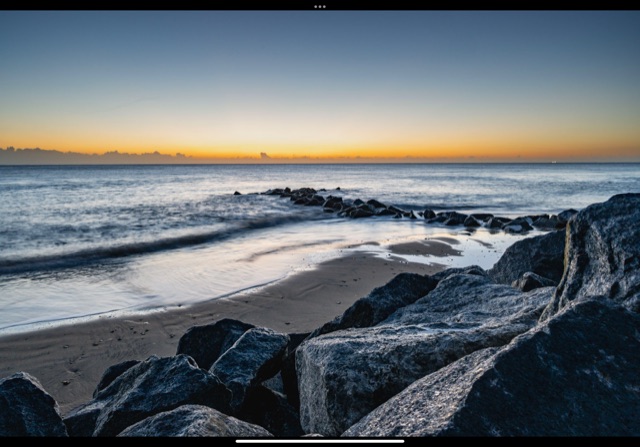
I tried a portrait orientation but it just wasn’t working so I moved further along the rocks and tried again.
I found a spot where I could rest my tripod and camera on a flat rock and the view was looking down and straight at the rocks which curve round and look like a sleeping alligator.
I really liked the pattern in a rock which was nearest to me and at the start of the rock formation.
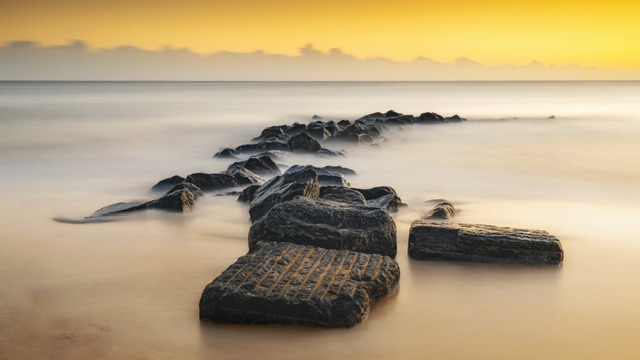
This shot is a typical one which would end up as a black and white but I really liked the golden colour, and in particular the sand in the lined crevices of the large rock in the foreground.
Here is the black and white version:
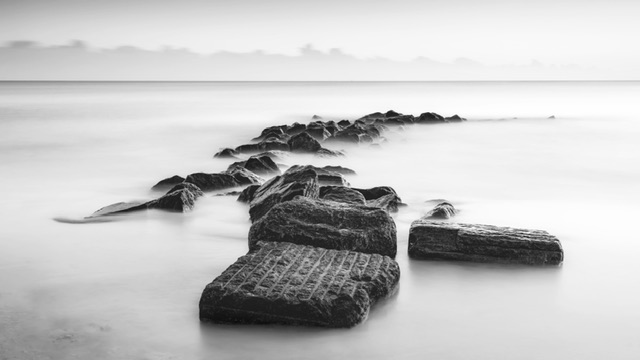
I have wondered if a crop to bring forward the main focal point of the interesting rock, and losing the dull sky may elevate this shot to something a little more impactful.
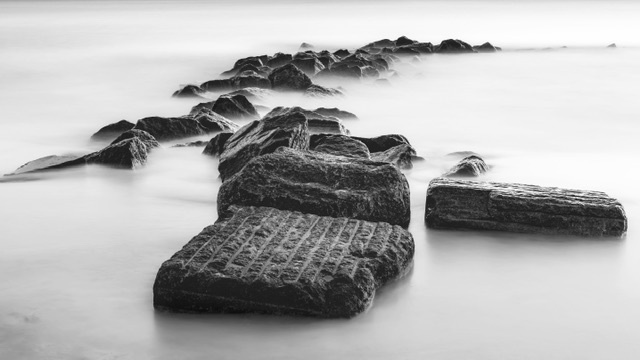
Swooshery
I was really enjoying this composition so just shot here and tried different shutter speeds to see if could get my favourite wave texture ‘Swooshery’ shot!
There were a couple of fleeting moments where there was a mini-swirl of water in front of the rock but I couldn’t time it right to grab it. However, I did get a few shots which are very pleasing.
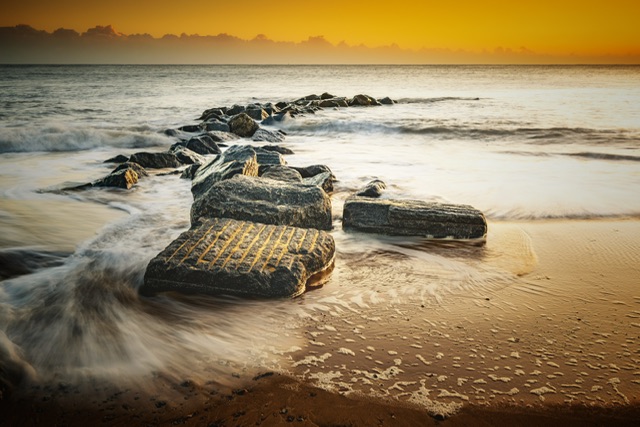
At this moment, the sun was rising very fast and was now visible over the horizon.
The grad filters had to come out and I used my reverse grad – this is a filter which has a dark area in the middle of the glass rather than at the top, and helps reduce the light of the sun just over the horizon.
I try not to use any filters, but on occasions like this I can’t be bothered to blend shots in post production so reach for the filters.

I was still experimenting with different shutter speeds – the one above is 0.8sec and the one below is 0.6sec.
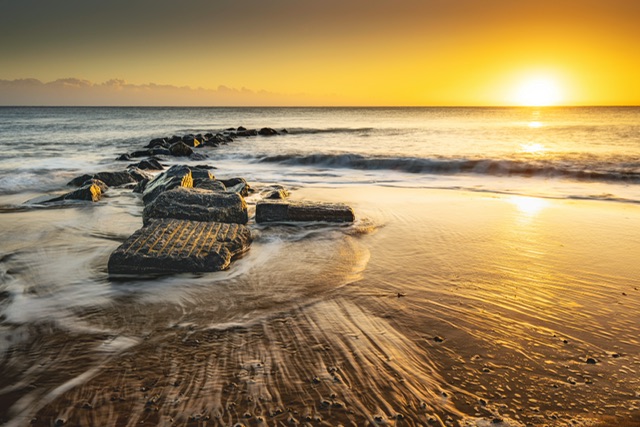
I put the camera settings above to flag that on occasion, to get the shutter speed I wanted, I willingly pushed the ISO up.
ISO Invariance
With my recent branching out into wildlife photography, I stumbled into some articles talking about ISO invariance in cameras.
There are better explanations than mine here, but basically it’s about certain ISO settings in your camera are optimum settings where you could have no more noise (grain) in your image than if you went higher.
For example, I could’ve picked ISO 320 or 400 but referencing the ISO invariance of my camera, I know that if I want an ISO higher than the native base of 64, I may as well jump to 500 for optimum image output.
The proof is in the pudding here in that I’ve not applied any noise reduction to the above image at all, and it’s fine with me. It could be the scene with desired texture in the water aids the absence of noticeable noise but nevertheless knowing the ideal ISOs for your camera means in theory you can grab optimum shots with minimal noise.
I’ve probably written a poor explanation here so to any fellow photographers, please do read more about this online, look up the ISO invariance levels for your camera if it has them.
For other readers, apologies for the geek out, let’s move on…
For my final shot to share, I cropped this to a 16:9 letterbox:

At this point, the sun was still rapidly rising and the sky now really bright providing a much harsher light.
We called it a wrap at this point, and had a chat about the challenge of finding compositions we liked with the tide so far in.
We agreed though that this location does have so much to offer, and is likely to be a regular visit.
It was another enjoyable morning and with a Ronald special on the way back, I got home at an earlier time and grabbed a couple of hours back in the land of nod.
Onwards and upwards…